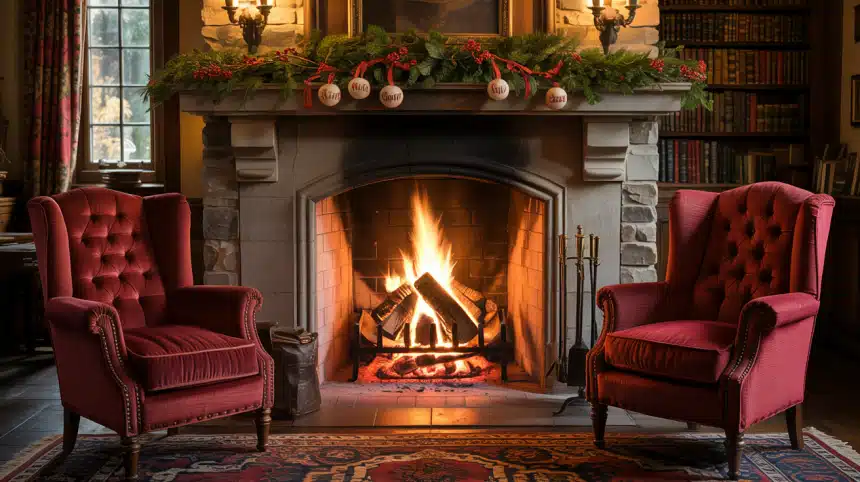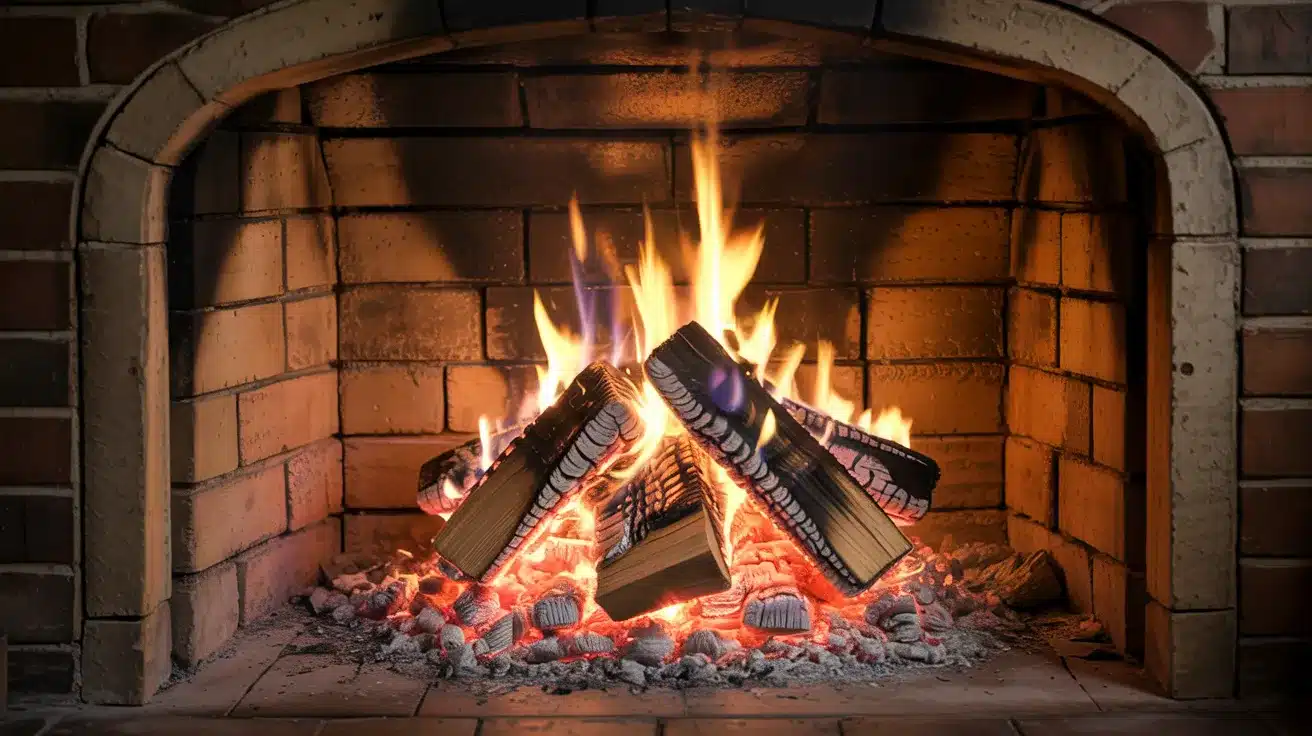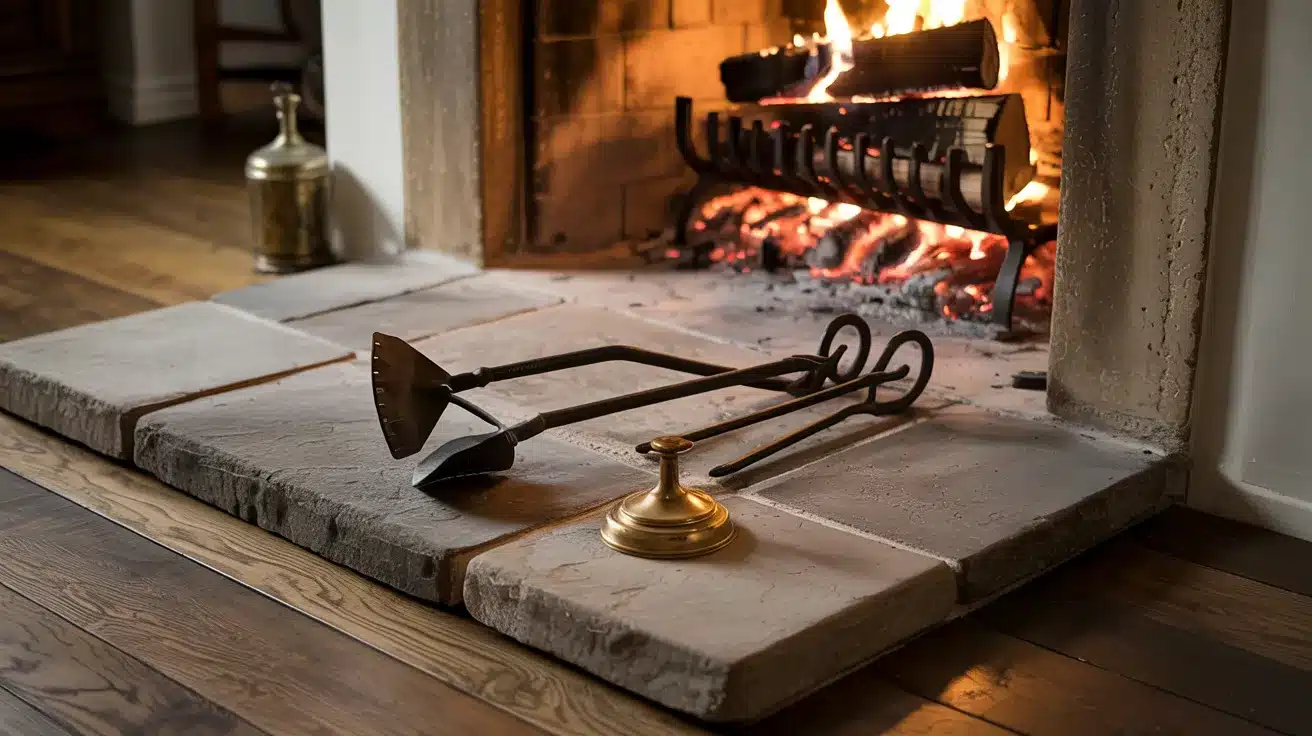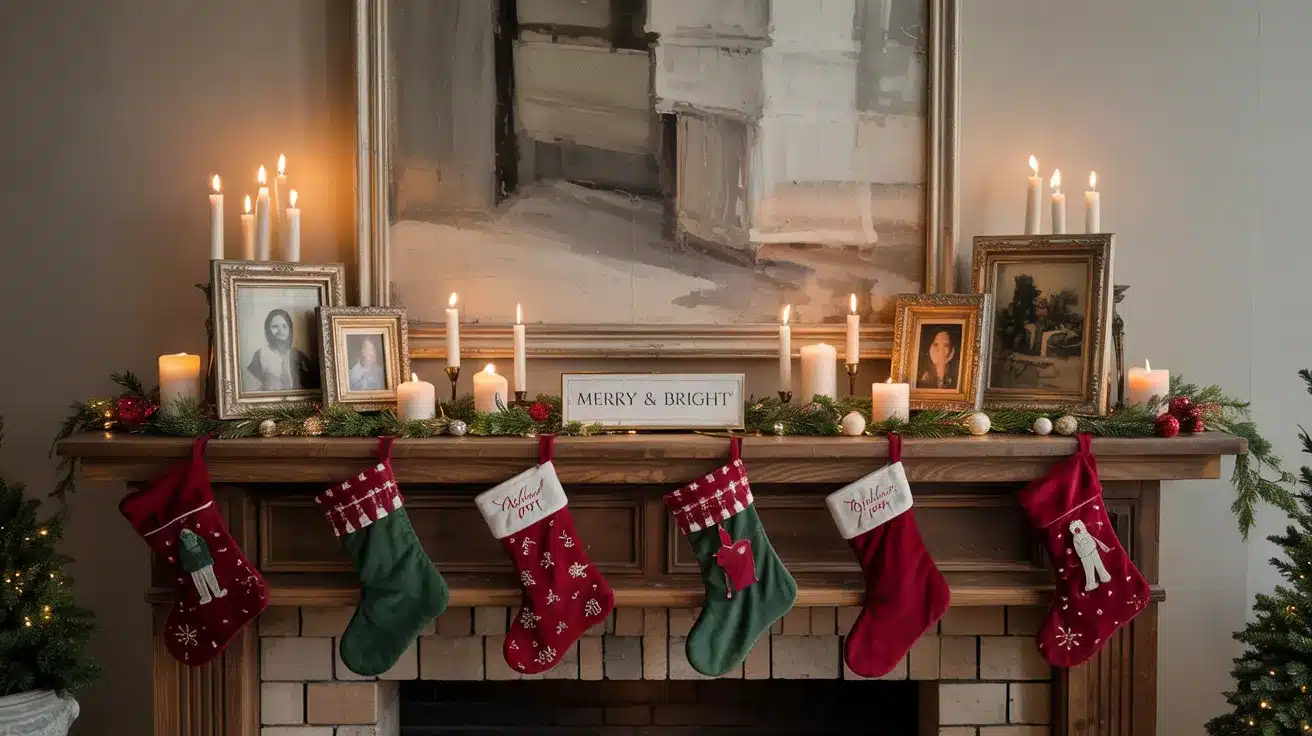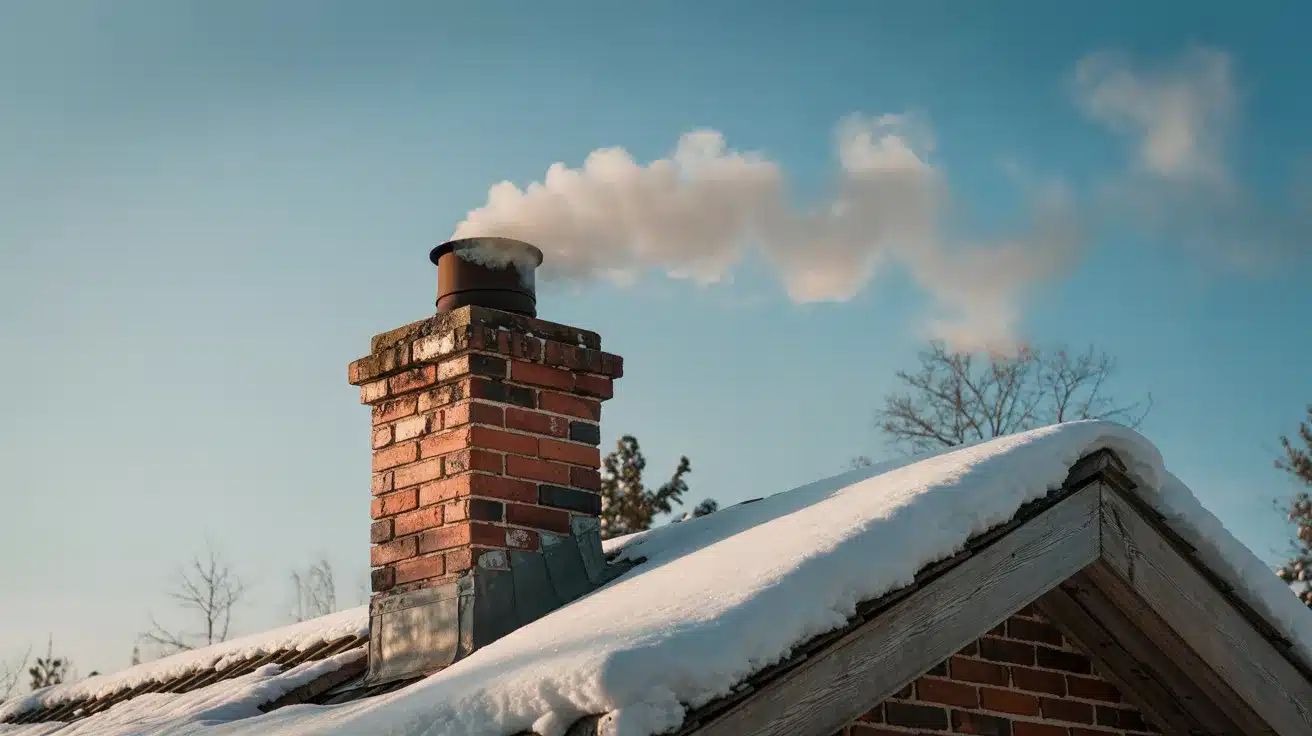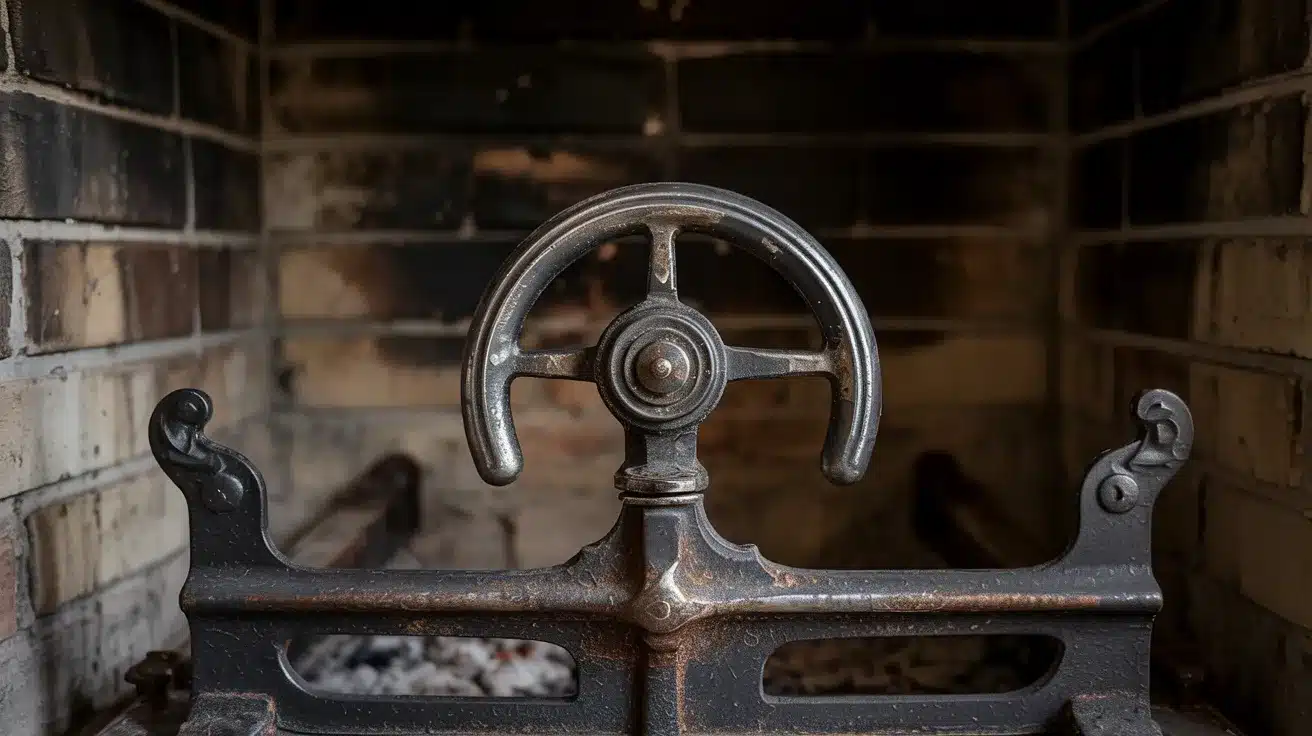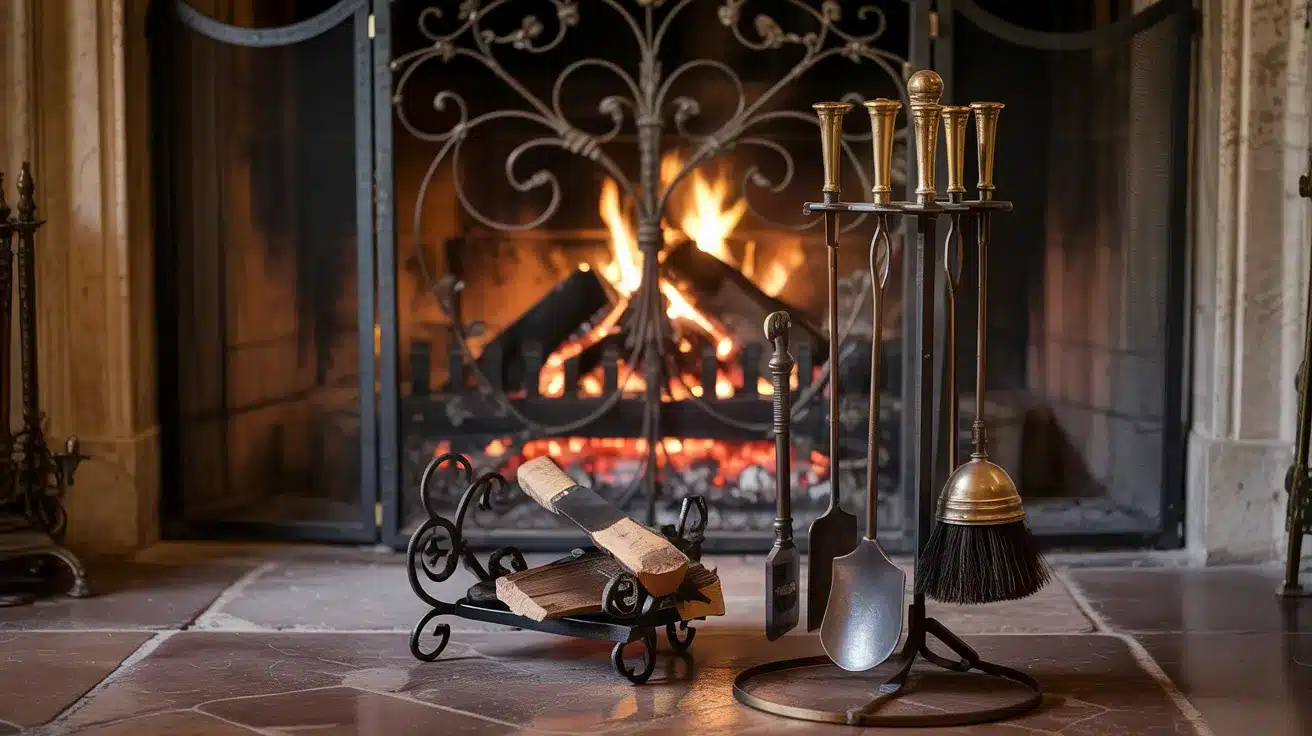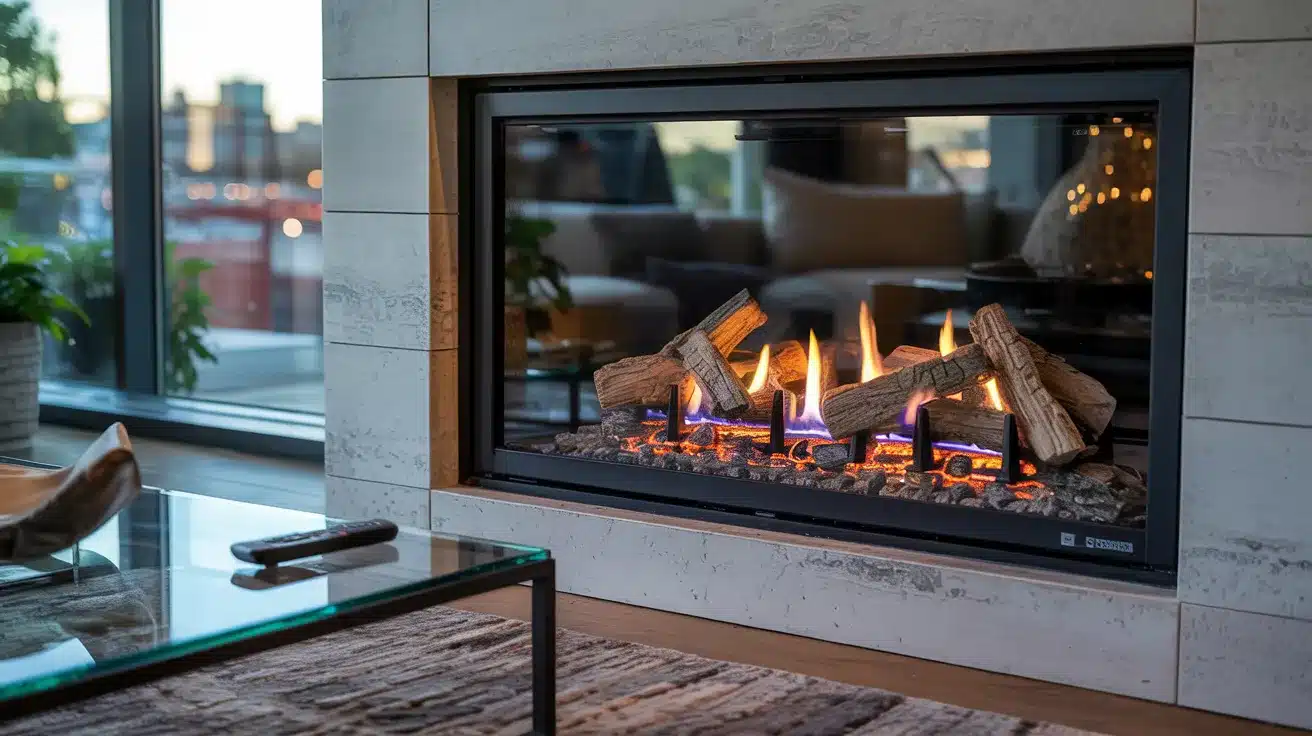- The Essential Parts of a Traditional Fireplace
- 1. Meet the Firebox: The Stage for the Show
- 2. Say Hello to the Hearth: The Red Carpet
- 3. The Mantel: The Crown and Trophy Shelf
- 4. Behind the Scenes: Smoke Out with the Chimney & Flue
- 5. The Gatekeeper: Damper Drama
- 6. Ash Dump: Where the Party Ends
- 7. Accessorize Like a Pro: Grates, Screens, Andirons & More
- 8. Bonus Round: Gas Fireplace Gadgets
- Seasonal Fireplace Maintenance Tips
- Conclusion
I’ve always believed there’s something magical about a crackling fire on a chilly evening. As someone who’s spent countless hours mesmerized by dancing flames, I’ve come to appreciate every part of this home centerpiece.
Whether you’re a new homeowner curious about that brick alcove in your living room or simply want to understand what makes your fireplace tick, I’m here to guide you through its anatomy.
From the firebox where the magic happens to the modern conveniences of gas fireplaces, I’ll walk you through each component with a dash of warmth and humor.
Ready to become a fireplace aficionado? Let’s swoop in!
The Essential Parts of a Traditional Fireplace
Every traditional fireplace comprises several key components, each with its own purpose and personality. Like characters in a well-crafted story, these elements work together to create the perfect setting for warmth and ambiance.
Let’s examine each part’s distinct role in converting simple flames into the cozy centerpiece of your home.
1. Meet the Firebox: The Stage for the Show
The firebox is the star of the show—the place where logs meet flame and magic happens.
- The Star Performer: This is where the action happens. The firebox is that recessed area where you actually build your fire, designed to contain the flames while radiating heat outward.
- Fun angle: Think of it like the dance floor — without it, no party! Just as dancers need space to move, flames need room to breathe and perform their mesmerizing dance.
- Materials: Why firebrick is tougher than it looks. Those yellowish bricks lining your firebox aren’t ordinary—they’re specially designed to withstand temperatures up to 2,000°F without cracking. Next time you light a fire, give a silent nod to these hardworking heat warriors.
Fireboxes come in various shapes and sizes, but they all share one purpose: to safely contain your fire while letting the warmth and light shine through. The best ones balance safety with efficiency, allowing maximum heat to radiate into your living space.
2. Say Hello to the Hearth: The Red Carpet
Extend a warm welcome to the hearth—that slightly raised platform at the front of your fireplace.
- The Safety Net and Style Icon: The hearth serves a dual purpose, creating a safe zone that catches stray embers while also framing your fireplace with style.
- History nugget: Hearths used to be the literal “heart” of the home. In medieval times, the central hearth wasn’t just for warmth—it was where families cooked, ate, socialized, and even conducted business. The word “hearth” shares roots with “heart,” which makes perfect sense when you think about it.
- Modern twist: Cozy stone? Sleek marble? It’s the fashion statement of your fireplace. Today’s hearths come in countless materials, from rustic slate to polished granite, allowing you to express your style while maintaining the fireplace’s functionality.
The hearth extends the fireplace’s presence into your living space, creating a transition zone between the fire and your floor. It’s a perfect spot for warming cold feet or setting down fire tools.
3. The Mantel: The Crown and Trophy Shelf
Rising above the firebox like a proud parent, the mantel frames your fireplace and provides prime real estate for personal expression.
- The Storyteller: Where we show off family photos, holiday stockings, or a clock that’s always wrong. The mantel has evolved from a purely functional feature to become the home’s most prominent display shelf.
- How mantels evolved from pure function to pure expression: Originally, mantels were simple stone lintels designed to support the masonry above the firebox. Over the centuries, they evolved into elaborate showcases of craftsmanship, ranging from ornately carved Victorian masterpieces to sleek, minimalist modern designs.
Your mantel sets the tone for your entire room. A chunky wooden beam creates a rustic, cabin-like feel, while a sleek, painted mantel might complement a more contemporary space. Whatever your style, the mantel invites personalization like no other part of your home.
4. Behind the Scenes: Smoke Out with the Chimney & Flue
Let’s venture upward to investigate the parts that keep your living room from looking like a foggy London street.
- The Unsung Heroes: Quietly carrying away the smoke (and your s’more experiments). Without these vertical passageways, your cozy fire would quickly become a smoky disaster.
- Fun fact: Chimneys had secret uses in old castles (hello, escape routes!). Medieval architects sometimes built hidden passageways within chimney systems, creating escape routes or spy holes. The next time you look up your chimney, imagine a knight or lady slipping away through a secret door!
- Flue vs. chimney — clear up the smoky confusion: Think of the chimney as the entire structure, while the flue is the actual passage through which smoke travels. A chimney might contain multiple flues serving different fireplaces or appliances in your home.
The chimney’s job is deceptively complex—it must create enough draft to pull smoke upward while keeping rain, animals, and debris out. A well-designed chimney works silently and efficiently, something you’ll only notice if it stops working properly!
5. The Gatekeeper: Damper Drama
Meet the part of your fireplace that controls airflow with the flick of a lever.
- The Bouncer at the Club: Controls who gets in (air) and who gets out (smoke). The damper is essentially a movable plate that can open or close the flue, regulating both airflow and heat retention.
- Why forgetting to open the damper leads to smoke alarms and angry roommates: We’ve all been there, excitedly lighting a fire only to watch smoke billow into the room because the damper is closed. This rookie mistake is a quick way to turn a cozy evening into an impromptu evacuation.
Your damper should be fully open when you’re burning a fire and closed when the fireplace isn’t in use (but only after all embers are completely cool). A closed damper on a cool fireplace prevents expensive heated or cooled air from escaping up the chimney, saving you money on energy bills.
6. Ash Dump: Where the Party Ends
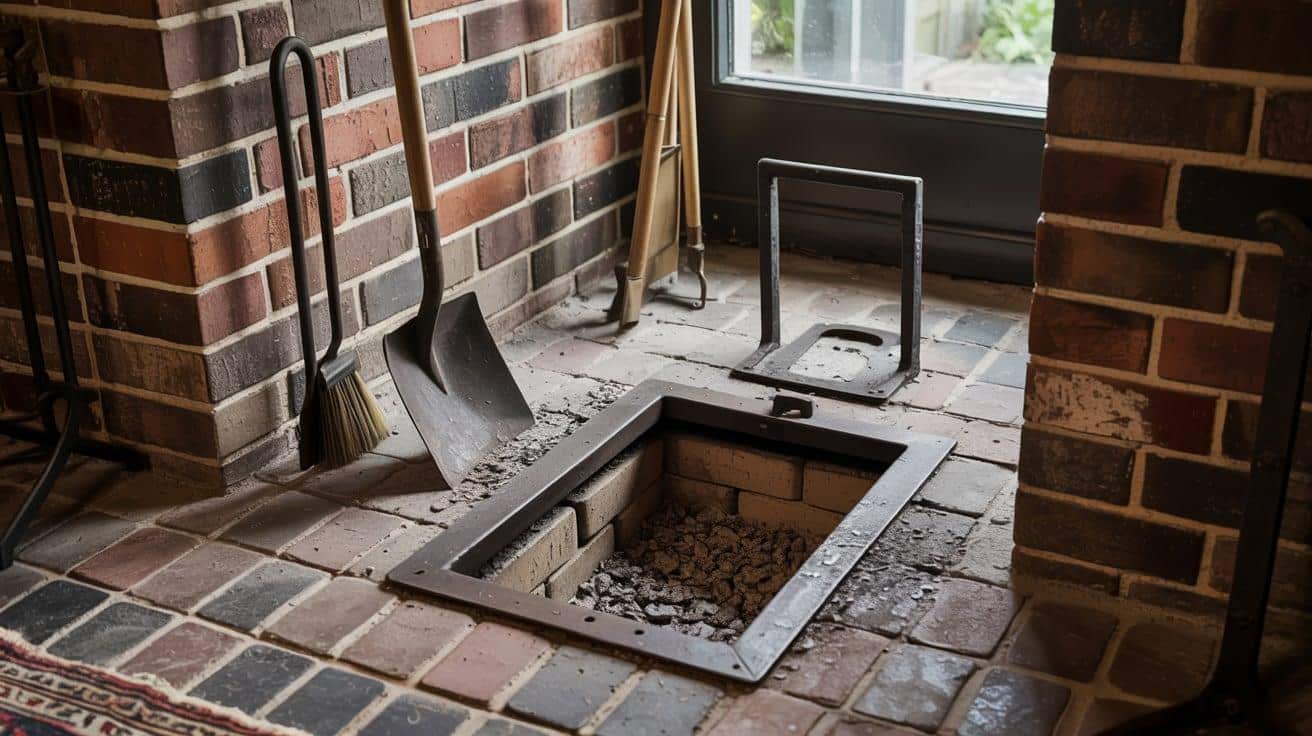
After the fire dies down, the cleanup begins—and that’s where the ash dump comes into play.
- The Cleanup Crew: What happens after the fire dies? Those beautiful flames eventually reduce your logs to a pile of ash that needs to be removed. Enter the ash dump—a clever solution to a messy problem.
- Why smart fireplaces have a secret trapdoor for ashes: Located in the floor of the firebox, this small trap door leads to a space beneath your fireplace where ashes can be stored until you’re ready to remove them. Instead of shoveling ashes out through your living room, you can simply sweep them into this hidden compartment.
Not all fireplaces have ash dumps, but those that do offer a cleaner, more convenient way to maintain your fireplace. If you’re building or renovating, consider this handy feature—your future self will thank you after a season of fires.
7. Accessorize Like a Pro: Grates, Screens, Andirons & More
Just like the perfect accessories can glorify an outfit, the right fireplace tools improve both function and style.
- The Glam Squad: Safety + Style = Chef’s kiss. Fireplace accessories have evolved to become design statements in their own right, with options ranging from sleek modern to ornate traditional.
- Grates: Keeping your logs dancing. These metal platforms elevate your wood above the firebox floor, allowing air to circulate underneath for a better burn. A good grate improves fire performance while protecting your firebox from excessive heat.
- Screens: Saving your carpet (and your eyebrows). Spark screens prevent embers from popping out onto your hearth or beyond, protecting both your home and its occupants from burns or fire damage.
- Andirons: The ancient, artsy sidekicks. These decorative metal supports date back to medieval times, helping to hold logs in position while allowing air circulation. Today, they range from simple iron bars to elaborate works of art.
Don’t forget the supporting cast—pokers, brushes, shovels, and tongs make tending your fire easier and safer. A coordinated set of tools not only looks polished but ensures you have everything needed to maintain your fire efficiently.
8. Bonus Round: Gas Fireplace Gadgets
For those who prefer to skip the chopping, stacking, and cleaning, gas fireplaces offer warmth with the push of a button.
- The Modern Tech Wizards: Gas fireplaces combine convenience with ambiance, giving you flames without the fuss. From simple inserts to elaborate built-ins, today’s options are impressively realistic.
- Gas logs so realistic, even your dog thinks they’re real: Modern ceramic logs are meticulously crafted to mimic the look of real wood, complete with glowing embers and dancing flames. The technology has advanced so far that visitors might not realize they’re not seeing actual burning logs.
- Remote-control magic: Because getting up is so 2005: Today’s gas fireplaces often come with remotes that control not just on/off functions but also flame height, fan speed, and even ambient lighting. Some even connect to smart home systems, allowing you to start your fire with a voice command.
While purists may argue that nothing beats a real wood fire, gas alternatives offer compelling benefits—instant heat, consistent performance, and no cleanup. Plus, they eliminate concerns about storing wood or dealing with smoke and ash.
Seasonal Fireplace Maintenance Tips
Even the most beautiful fireplace needs regular care to function safely and efficiently.
- The Annual Checkup: Before lighting your first fire of the season, schedule a professional chimney inspection to check for creosote buildup or blockages. This dark, flammable substance can cause dangerous chimney fires if left unchecked.
- The Clean Routine: Clean your firebox regularly, removing ashes once they’ve completely cooled. A small layer of ash (about 1 inch) actually helps insulate the firebox and reflect heat back into the room.
- The Moving Parts Inspection: Test your damper mechanism to ensure smooth operation. Like any moving part, it can get sticky with soot and creosote. A properly functioning damper is crucial for both fire performance and energy savings.
For gas fireplaces, have a technician examine gas lines and connections annually. The best fire performance comes from properly seasoned firewood (dried for at least six months), which burns cleaner and hotter while producing less smoke and creosote.
Conclusion
From the humble firebox to the high-tech gas alternatives, each part of a fireplace tells a story of human ingenuity.
I find it remarkable how these elements have evolved over centuries while maintaining their essential purpose—bringing comfort into our homes.
The dancing flames within sturdy firebrick, the artful mantel displaying treasured memories, the quiet efficiency of a well-designed chimney—all work in harmony to create that irreplaceable atmosphere only a fireplace can provide.
Understanding these components deepens appreciation for this timeless feature that has warmed generations.
Whether you prefer the crackling of real logs or the convenience of a remote control, your fireplace stands as a testament to our enduring desire for both physical warmth and the intangible comfort of home.

